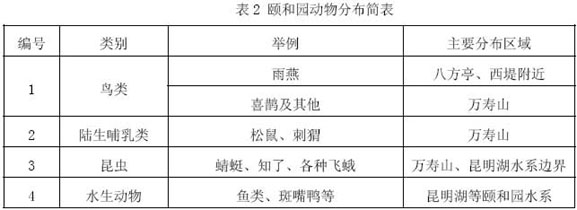Tianjin University
Abstract: The Summer Palace is not only a protected object of world cultural heritage, but also rich in animal and plant ecological environments. Environmental impact analysis is essential for the construction of night lighting projects in the area. At present, there are few studies on the environmental impact of night lighting projects in Chinese classical gardens at home and abroad, and there is a lack of scientific evaluation systems and analytical methods. Based on the research and demonstration of the Summer Garden Classical Garden Night Lighting Technology, this paper focuses on the three elements of the Summer Palace (ancient buildings, animals and plants) that may be affected by lighting, using simulation experiments, field measurements, and statistical analysis. Based on the results of the study, a map of the illumination protection zone considering individual lighting elements was determined. Based on this, the lighting protection weights considering multiple elements are given.
Keywords: Summer Palace environmental impact, environmental protection, ancient building protection, lighting engineering, green lighting
1 Introduction
The Summer Palace is a master of Chinese classical gardens. It is a treasure trove of historical culture and a natural environment. The use of lighting, such as modern lighting technology, scientific lighting can fully explore its historical and cultural connotations. However, due to the important historical culture and ecological value of the Summer Palace, in the night lighting, it is necessary to carry out scientific, green and ecological night lighting on the premise of environmental protection. In order to achieve this goal, the Summer Palace Research Group conducted a study on the environmental impact of the nightscape project.
2 . Summer Palace Environmental Impact Research Framework
The environmental elements of the Summer Palace are mainly ancient buildings, animals and plants. These three elements are related to each other, and each element contains a large number of sub-elements. Therefore, the independent study can not reflect the comprehensive effect of the environment, and the comprehensive research evaluation is extremely difficult. Therefore, based on the above characteristics, this paper establishes a mathematical model for multi-element classification research and post-comprehensive evaluation, and develops the following research framework to study, which are discussed separately below.

3. Study on the influence of lighting on the elements of ancient buildings in the Summer Palace
3.1 Study on the distribution of ancient buildings
In order to grasp the detailed status quo of the ancient buildings of the Summer Palace, the research team first conducted a comprehensive survey and statistics on the ancient buildings in the Summer Palace Park. There are more than 3,000 ancient buildings in the Summer Palace, forming more than 20 ancient architectural communities. According to the form, there are many forms in Chinese ancient buildings such as temples, squares, gates, buildings, churches, pavilions and fastings. According to the function, there are several functional areas such as temple area, palace area, office area and tourist area. The research team comprehensively considers its historical value and level (including the following oil painting and painting factors), and divides the ancient buildings of the Summer Palace into six levels. In order to correspond to the animal and plant lighting partition below, it is reduced to three levels, of which the category 1 has the highest level of protection and the category 3 has the lowest level of protection. The specific partition map is as follows:

3.2 Research on the Influence of Lighting on Ancient Building Oil Paintings
The oil paintings on the ancient buildings of the Summer Palace are world-famous, especially the more than 8,000 oil paintings on the promenade are even more unique. It is especially necessary to protect the lighting after it has been implemented. In general, oil paintings on ancient buildings have faded, pulverized, cracked, rolled, and peeled off under the action of natural light. In order to study the influence of artificial lighting on it, the research team used metal halide lamps, high-pressure sodium lamps, fluorescent lamps, tungsten halogen lamps, and sunlight to oil paints and color paintings in six colors (red, blue, green, white, black, fragrant or The yellow test block was subjected to multi-cycle long-term laboratory irradiation experiments, and the gloss, brightness, chroma, hue and internal temperature changes of the test block were quantified. The experimental results show that the gloss, brightness and chroma of the test block are reduced, the color tone is shifted, and the temperature is increased. The experimental results of various lamps are shown in Table 1. The appropriate luminaire should be selected according to the following table when designing the lighting.

4. Study on the influence of lighting on animal factors
4.1 Statistical study on animal species and distribution in the Summer Palace
There are many kinds of animals in the Summer Palace. There are only 181 species of recorded birds. After surveying, reviewing and observing the park, detailed maps of various animals are drawn. Due to limited layout, only the following distribution profiles are given. .

![<?echo $_SERVER['SERVER_NAME'];?>](/template/twentyseventeen/skin/images/header.jpg)